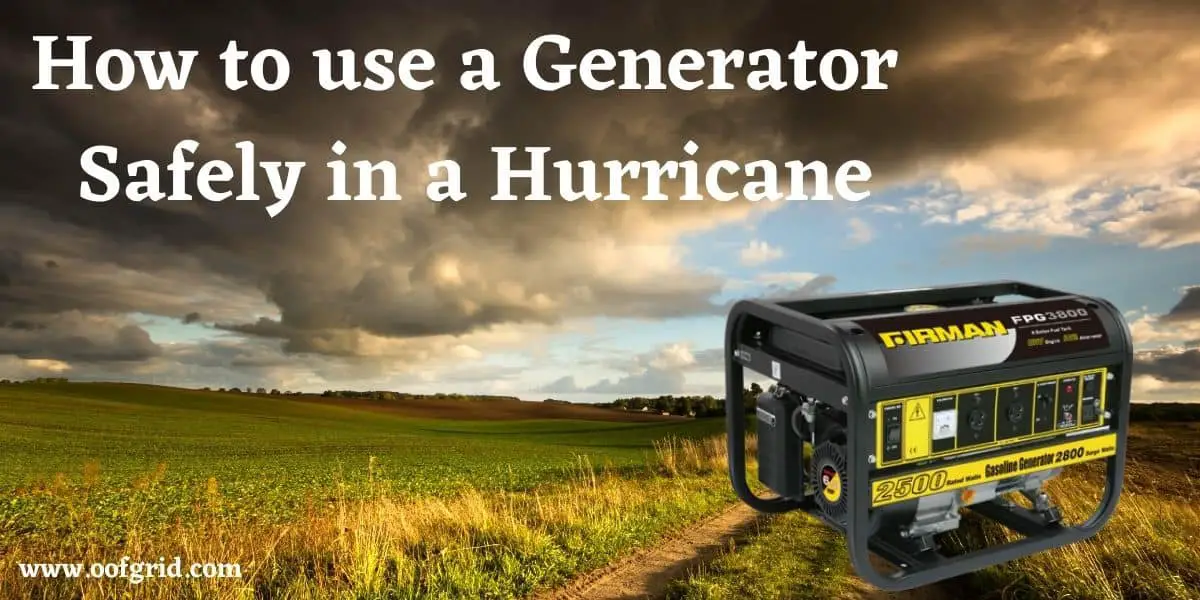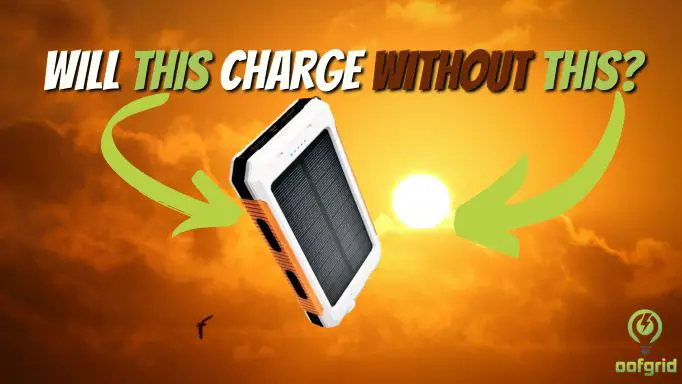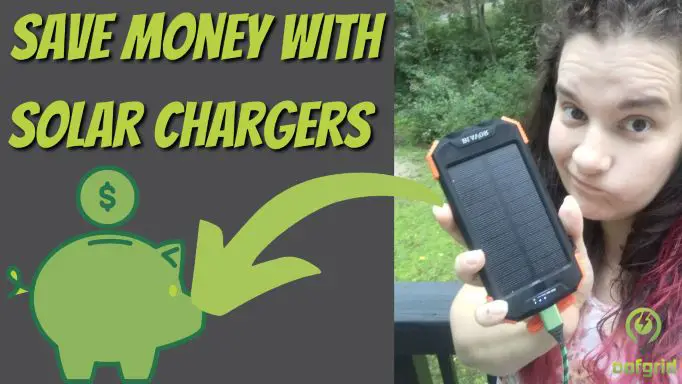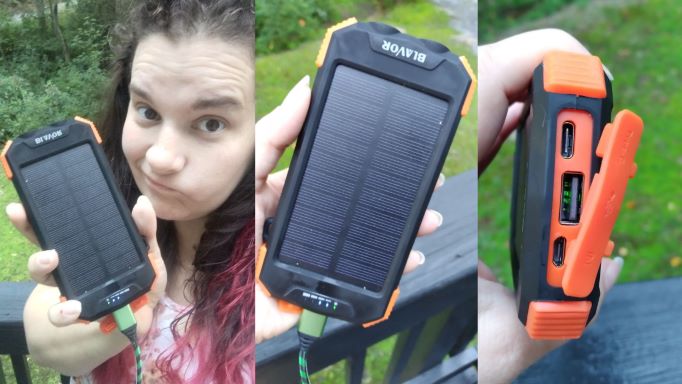How to use a generator safely in hurricane season? That’s a loaded question – it may prove really difficult to safely use a generator during a storm or hurricane. As we discuss below, you are constantly faced with two opposing problems. You have to protect the generator from the elements, but if you place it anywhere close to your home, you could face serious issues that may even result in death.
However, if you have your power knocked out during a hurricane, a generator with appropriate wattage could be a life saver over the hours, days or (even occasionally) weeks before normal service is restored. The trick is to use it to its maximum advantage while maintaining safety.
Contents
DANGERS FROM THE IMPROPER CARE AND USE OF A GENERATOR
Before getting into a storm or hurricane event, let us review some of the big no-no’s with generator use, and how those risks can be accentuated during a storm.
PLAN FOR AN EMERGENCY
There are several steps necessary to plan for an emergency such as a severe storm or a hurricane. Doing things on the fly when torrential winds and rain are sweeping through and the power is down can lead to disaster. Some basic steps require:
- Figure out where the generator is going to be housed – during storage, for use during dry weather and in a storm/hurricane. See below for more thoughts on this.
- Get a generator with adequate power. They can run anywhere from 2-20KW (2,000 to 20,000 watts), but larger units will require more paraphernalia. Take an inventory of the critical appliances (e.g., refrigerator, certain fixtures, communication devices etc.) that you need to run during an emergency. Find the total wattage required (from the labels) and multiply by 1.5 for redundancy – match the power source to what you need.
- Get proper cords that you can use to run power from the generator to the appliances – ensure that they are long enough, can adequately carry the load required and are not bent, kinked or other damaged to avoid any electrical mishaps. Double insulation cords that use #14AWG wiring are a minimum requirement – if necessary, consult a licensed electrician. Expect to spend approximately $50 per cord. Read more here on cords.
- Get enough fuel and pick a storage spot that is sufficiently removed from a running generator, parts such as the muffler will stay red hot even after the unit is switched off and can melt through the plastic casing of fuel cans and cause an explosion.
NEVER HAVE A GENERATOR RUNNING CLOSE TO YOU
A live generator spews carbon monoxide (CO), a toxic gas that is colorless and odorless, and can kill you and your family in a matter of 10-15 minutes within an enclosed space.
Bottom line, generators should not be placed inside the house, a garage adjacent to the house, a porch and/or open windows and doors through which CO can seep into your environment. The best place for a generator is an open shed like structure away from the house, with connections drawn directly to critical appliances through a cord that can bear appropriate load.
During a storm, it is often the case that the family members are huddled in, and this is where danger creeps in. If a generator is moved closer to the home because its precise location has not been pre-planned, CO releases can prove fatal – as has been proved over and over by many fatalities that have occurred during serious storms.
This means that you cannot ignore the fundamental rule of running a generator at least 10 feet from the house and 20 feet away from open doors and windows – and never in an attached garage or a porch – regardless of how bad the conditions are.
DO NOT PLUG THE GENERATOR INTO THE ELECTRIC SYSTEM DIRECTLY
Plugging a generator directly into a wall socket after a power outage will carry 240-volt electricity from the generator back to the main electric panel. This backfeeding poses myriad risks:
- Typically, a male-to-male cord is used to plug into the generator on one side and the dead wall socket on the other. The end being plugged into a wall socket is “live” – as such, someone handling it could be electrocuted and die. Such a risk increases exponentially when there may be standing water or other related storm hazards. A whole floor could become a death trap.
- Since a generator supplies power at a steady 240 volts, the load on your electric system could become unbalanced given that the appliances that you will be powering on may draw power at different rates. This poses a danger both in terms of dirty electricity, as well as potential fire hazards.
- If the main breaker switch is not thrown off during backfeeding, the problem exacerbates with power now feeding all the way back to the utility lines outside.
A GENERATOR CAN GET WET, BUT YOU CAN’T HANDLE IT IN WET CONDITIONS
Getting wet will not ruin a generator. However, that’s not the crux of the matter during a storm. A generator sitting in wet weather poses a significant shock and electrocution hazard as you are scrambling to plug and unplug appliances into it. As explained above, directly plugging into a wall socket should be avoided if possible.
Handling a wet generator poses the risk of electrocution and major damage. Even generators that have ground fault circuit interrupt (GFCI) can be risky when wet – though the theory is that it should stop power to the outlet if water gets inside.
While generator covers can help, the ideal solution is for a generator to be standing in a dry, level and well-ventilated area. It should be well secured – not only against theft but also to prevent it flying away during a storm or hurricane.
THE FUEL SUPPLY MUST BE SECURE
Getting an adequate supply of fuel is one part of preparation, but ensuring that it’s stored in a safe place, away from an operating generator, is key. This is where a chaotic hurricane situation may cause a big problem.
If a generator bowls over from its stand, or however you have placed it, and comes in touch with fuel cans lying in the area, there could easily be an explosion given that the heat of the muffler and/or other parts of the generator (including cable leads) can eat through the plastic casing and react directly with the fuel within.

A generator should never be fueled while running. In fact, the power cords running to the appliances should only be plugged in after it is up and running smoothly – that too, one by one, with the most critical appliance first, to avoid overloading the unit. Similarly, when shutting off, the cords should be pulled one by one.
When you do refuel, remember the generator oil – a key to smooth functioning.
Too often during a storm, things run helter skelter – a small mistake could lead to drastic consequences.
HOW CAN YOU USE A GENERATOR SAFELY DURING A HURRICANE?
As outlined above, it may not be a good idea to use a generator during the peak period of a hurricane – too many things could go wrong. However, there are some basic safety rules that would make things a lot safer.
FIND THE RIGHT SPOT TO HOUSE THE GENERATOR
The generator has to be kept away from the house and open doors and windows. The ideal location is a shed, provided it is close enough that power cords can be drawn to the critical appliances in your house. While an attached garage is very dangerous, a detached carport may be another good location.
The trick is to find a location where the generator is protected from the elements – where it won’t overturn or blow away, causing mayhem while attached to your home appliances – but does not spew dangerous CO gas directly into the location where you are breathing.
FIND THE RIGHT SPOT FOR THE FUEL
This may sound excessive, but it’s really important to decide where you will stow the fuel when the generator is running. Keeping a half empty can close by can beckon disaster – picking the right spot and having the discipline to use it when things are a bit chaotic during a storm may be the difference between comfort and total disaster.
GET A TRANSFER SWITCH IF YOU USE A LARGE WATTAGE GENERATOR
If you need to plug the generator into your home’s electric system – perhaps because there are a large number of appliances and fixtures you need to power – find a licensed electrician to install a transfer switch that will shut off the main circuit breaker when you are on backup power.
While a manual switch can be used, it still leaves open the possibility of human error. An automatic transfer switch will detect when the main power feed is off and then switch to backup power safely – there will be no backfeeding into your home’s main electric system.
Be aware, though, that trying to run a large number of appliances during a major storm or hurricane is likely a very bad idea. You are just asking for trouble if the system overloads for any reason, and there will likely not be a lot of support personnel around to help.
FOR A PORTABLE GENERATOR, MAKE SURE YOU HAVE THE RIGHT CORDS
To safely use a portable generator, power cords are the best answer. As mentioned before, make sure you have power cords that can bear adequate loads, meet the required specifications and are long enough to reach your critical appliances from wherever you store your generator. This may seem simple, but many accidents happen because of deficient cords.
THE FINAL WORD
Using a generator during a hurricane can provide you with much needed relief, but only if you adhere to the safety guidelines. An ad hoc plan to just drag a portable generator to the location most convenient during a storm can, and likely will, have tragic consequences.
It is best not to use a generator during the height of a storm to avoid danger. But if you must do so, follow the guidelines above. Planning and disciplined execution is key when operating a source of electrical power that can kill people or burn a house down.






